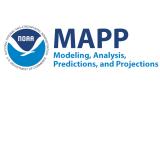Advancing Understanding of Plant-Drought Interactions for Landscape to Regional Scale Drought Prediction

This study aims to better understand vegetation-atmosphere feedbacks that lead to, intensify, and sustain drought, and to increase understanding of interactions of vegetation within the physical climate system. An improved understanding of vegetation-drought feedbacks could contribute to improved probabilistic predictions on seasonal to climate timescales.
This project is part of the MAPP/NIDIS-supported Drought Task Force V.
Research Snapshot
Aleya Kaushik, University of Colorado Boulder
Bharat Rastogi, University of Colorado Boulder; John Miller and Lori Bruhwiler, NOAA Global Monitoring Laboratory
What to expect from this research
This project builds on previous NIDIS/MAPP-funded research demonstrating the use of new data constraints that have not been previously considered for drought monitoring. The researchers will focus on three objectives:
- Analyze the sensitivity of drought events to vegetation interactions.
- Optimize biosphere model parameters relevant to energy, moisture, and carbon exchange during droughts, using atmospheric observations of carbon dioxide, carbonyl sulfide, leaf surface temperature (LST), and solar-induced chlorophyll fluorescence (SIF).
- Improving forecasting of drought using plant stress response as a benchmark






